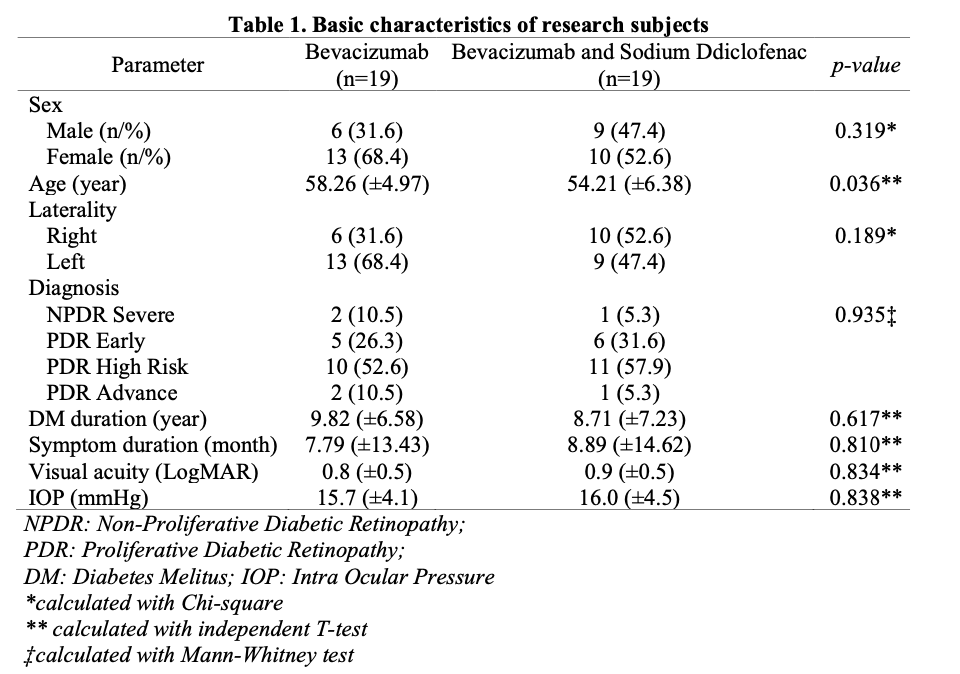Comparison of Visual Acuity and Central Macular Thickness in Neovascular Age-related Macular Degeneration Patients with Subretinal and Intraretinal Fluid Treated with Intravitreal Bevacizumab
Abstract
Purpose: To compare visual acuity (VA) and central macular thickness (CMT) outcome of loading dose intravitreal bevacizumab treatment between neovascular AMD patients with character of predominant subretinal and intraretinal fluid.
Methods: Prospective study of loading dose intravitreal bevacizumab treated age-related macular degeneration, of which has a baseline macular morphology of subretinal or intraretinal fluid. VA, CMT, and their changes were evaluated during and after loading dose was completed.
Results: Thirty eight eyes (38 patients, mean age 66,95 years) were enrolled. 20 eyes were in subretinal fluid (SRF group) and 18 intraretinal fluid (IRF) group. Mean VA at baseline eventually was significantly different where SRF group (56,41 letters) were better than IRF group (43,72 letters). No statistically significant difference of mean VA change or CMT change between group, however VA in SRF group remained higher and CMT in SRF group were lower than IRF group.
Conclusion: Neovascular AMD, with both SRF and IRF at baseline, benefits from loading dose intravitreal bevacizumab treatment although mean visual acuity and mean central retinal thickness are better in those with SRF.


